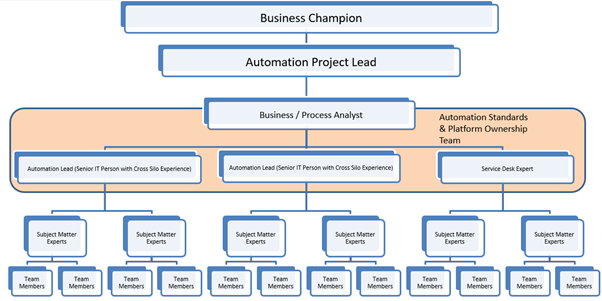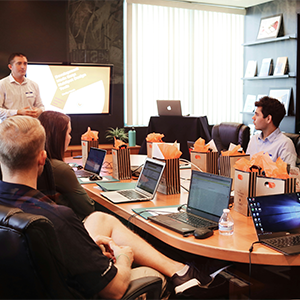For any company to achieve a successful with automation project, it is more than just identifying the right automation tooling. This article discusses key areas that should be considered before embarking on an automation journey.
Articulating the business benefits
First and foremost, when considering automation is articulating the business benefits that automation can offer to the business. Kelverion has a very useful Automation Value Calculator to assist organizations with identifying time and cost savings benefits automation can bring to your business. You can even book a complimentary custom analysis session to calculate the return on investment for your organization.
Securing executive sponsorship and establishing governance for an automation project
Having support and guidance from a senior leader within your organization will undoubtedly benefit the delivery of your automation project. Implementing automation is a change, and as with any change, it has the potential for resistance. It is imperative to secure sponsorship from someone who has an interest in service improvement and can provide support in making the change happen.
In addition, do not underestimate the importance of working in partnership with other stakeholders outside the IT department, such as in finance or human resources functions. Obtain their buy-in and seek their counsel on the elements of the project, which will aid and positively impact their area of responsibility. Our experience from running Automation Assessments is that they will be delighted at the prospect of transforming laborious processes.
Defining an automation team structure for optimal success
Creating an automation project team will assist with the successful delivery of the initiative. Kelverion has a wealth of experience in automation projects, and the best practice guidance on what this structure should be composed of is:
- Business Champion – this is typically the IT Director or senior sponsor. This person will directly benefit from the efficiencies achieved and will decide which processes should be altered to harness the smooth request fulfilment that automation will provide.
- Automation Project Lead – this person is responsible for reporting the progress of the project and identifying future automation opportunities. In addition, they will highlight any impact on existing business processes or procedures. This individual should report to the Business Champion in the organization structure.
- Automation Standards and Platform Ownership Team – This group is comprised of several senior individuals who know different technological areas and have experience in the customer’s process. They will drive the day-to-day automation initiative actions.
- Subject Matter Experts – These team members are specialists in different technology silos and are enlisted for support with an automation use case. They provide detailed technical input in their area of expertise and assist with the testing of the automated process.
For smaller projects some of these roles may be performed by the same person.

Identifying automation use cases and building the business case
Companies starting an automation project often struggle to work out which processes to automate first; having worked with lots of customers, there are a few common use cases, but to work out what processes are most suitable for automating in your business, much of the source data to help identify what to automate is available within your service desk, along with the information required to justify the development.
This exercise starts with running reports from your service desk and answering the questions below:
What are the most frequent requests?
- How often is this requested?
- What is the typical elapsed time to fulfil a request of this nature?
- How long does it take to process this request manually?
- What level of technical skill is used to achieve this?
- What is their fully loaded cost per hour?
The answers to these questions will identify the business costs in time and money for manually fulfilling a task. Those with the highest frequency and time required to manually fulfil are the automation use cases for your business. With this time and equivalent labor cost savings you can build out your business case.
As mentioned before the Automation Value Calculator can be used to assist you with identifying time and cost savings benefits.
Agile development processes
Future-proofing an automation solution is integral to the continued success of the automation initiative. These factors are almost always overlooked when selecting an automation approach; consider team collaboration, version control and CI/CD release management processes.
Next steps
There are many elements to navigate when piecing together your automation project plan. If you are planning an Automation project in your organization and would like to leverage the experience of the Kelverion team, please email us for a no-obligation consultation – info@kelverion.com.

About Kelverion
Experts in Cloud, On-Premise and Hybrid automation, Kelverion provide solutions and integrations that remove the manual process tying up IT staff; transforming the productivity, efficiency, and supportability of IT service automation. Our products utilize and enhance the power of Microsoft Azure and System Center Orchestrator.
Working closely alongside Microsoft we have developed our integrations and automation solutions to help bridge the gap between Microsoft’s automation platforms and third-party systems, in the process building key alliance partnerships with multiple vendors to ensure our products are fully certified. Find Kelverion on the Azure Marketplace.
Since 2010, Kelverion has expanded to become a global company, with offices now in the UK, Canada, and the US. Through this, we are able to offer and support products and professional services engagements to enterprise-level organizations no matter where they are.
For more information, to arrange a discovery call or to see a demonstration please contact our helpful team today via info@kelverion.com.




